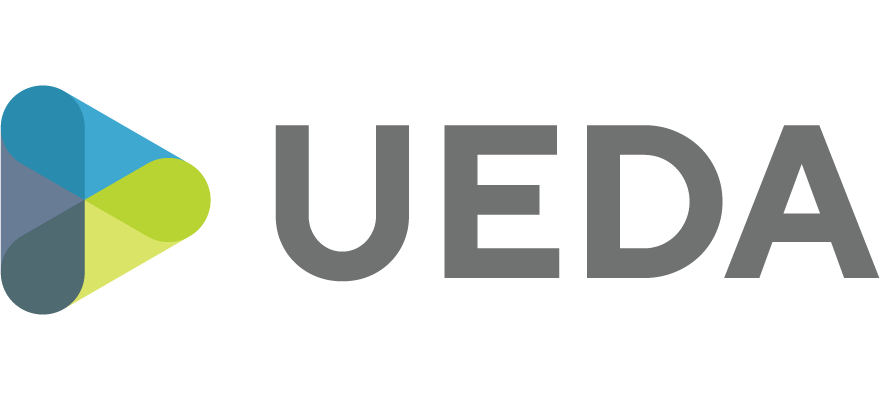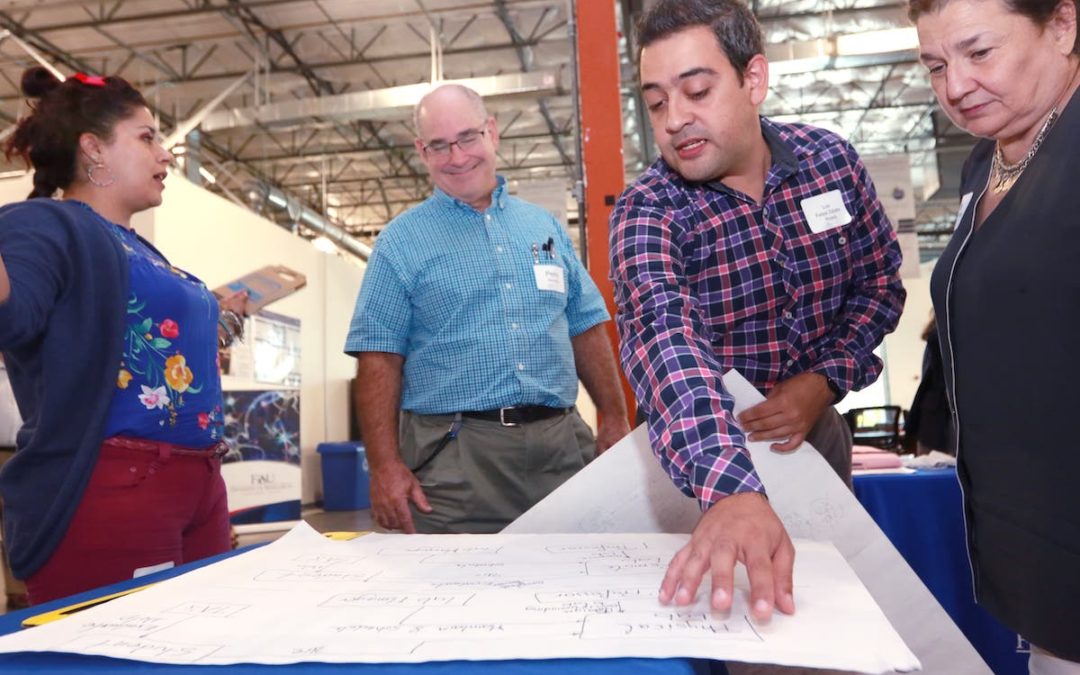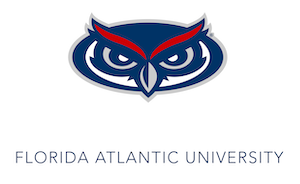 Stephanie Pierce—economic development and entrepreneur relations manager at Kansas State University, and UEDA Membership and Marketing Committee member—recently talked with Sandra Marin Ruiz, assistant vice president for innovation and business development and the regional director of the Florida SBDC at Florida Atlantic University (FAU); Regina Thompson, strategic initiatives manager under the Division of Research; and Jessica Beaver, associate director of FAU Tech Runway, finalist in the 2021 UEDA Awards of Excellence in the Talent + Innovation category for their Building an Innovation Pipeline entry.
Stephanie Pierce—economic development and entrepreneur relations manager at Kansas State University, and UEDA Membership and Marketing Committee member—recently talked with Sandra Marin Ruiz, assistant vice president for innovation and business development and the regional director of the Florida SBDC at Florida Atlantic University (FAU); Regina Thompson, strategic initiatives manager under the Division of Research; and Jessica Beaver, associate director of FAU Tech Runway, finalist in the 2021 UEDA Awards of Excellence in the Talent + Innovation category for their Building an Innovation Pipeline entry.
Here is a transcript of the conversation, edited for length.
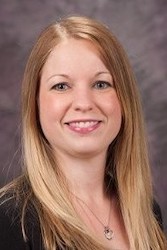 Stephanie Pierce: Please give me kind of a brief overview of Building an Innovation Pipeline.
Stephanie Pierce: Please give me kind of a brief overview of Building an Innovation Pipeline.
Regina Thompson: Our application was a mix of all of our programs together. We highlighted a problem that we had—that we all worked in silos. You know, this one helps students with entrepreneurship. This one helped with competitions. This one helped with startups… And we realized why don’t we bring them all together so that we can create a comprehensive A-to-Z framework of how this could happen at our university.
So, we put them together, starting with the Wave program—an applied research and entrepreneurial competition—with other opportunities like business plan competitions going on at Tech Runaway, and business building and growth programs at the Small Business Development Center.
Stephanie: What key outcomes have you seen?
Regina: The Wave program, which is the student-centric program, gives seed funding for project development and helps the students just get their feet wet in entrepreneurship. It’s about six years old and we have supported 180 student participants, 55% of whom are minorities. We’re very proud about that because we have a very diverse student body here on campus. We’ve been able to fund the development of 125 student projects, which is really neat because they can work together in teams and begin to innovate.
I’ve also coached some of them on their oral presentation skills to participate in pitch competitions, internal and external, from the university. They’ve won a total of $150,000 in cash prizes to date. I’m very proud of them.
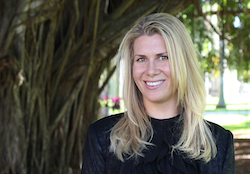 Jessica Beaver: At the Tech Runway, we focus both on internal FAU constituents, faculty, staff, and students, but we also are external facing as well. After students have participated in competitions that Regina described, they can apply and participate in our FAU Tech Runway program. The program is about seven years old. We’ve worked with well over 120 companies, had over 250 internships, and 650 new jobs have been created in the region. There have been 120 patent applications with revenue close to $300 million being generated and capital raised close to $150 million. So, our program is producing some really wonderful outcomes.
Jessica Beaver: At the Tech Runway, we focus both on internal FAU constituents, faculty, staff, and students, but we also are external facing as well. After students have participated in competitions that Regina described, they can apply and participate in our FAU Tech Runway program. The program is about seven years old. We’ve worked with well over 120 companies, had over 250 internships, and 650 new jobs have been created in the region. There have been 120 patent applications with revenue close to $300 million being generated and capital raised close to $150 million. So, our program is producing some really wonderful outcomes.
Sandra Marin: For every dollar that the Small Business Development Center receives from the state and federal funding, we return $60 to the economy. And this is how we provide business consulting at no cost and confidentially to those who come to the programs that you just heard about.
We are also the first responders in economic development when economic challenges happen. We serve a non-discriminatory basis. The business owners who come to the SBDC are 42% women, 10% veterans and 37% minority.
Once they cross to the business incubation side, we help them to get into the economy and they start producing the impact that I described. We have $7 billion in sales on government contracts, $500 million in capital access. What really triggered our services is the about 40,000 jobs that we help create or retain.
Stephanie: I love how it’s a pipeline and a flow between the different entities and places within the university and the community. Who else have you partnered with both inside and outside the university to achieve success?
Regina: I’ve worked internally with different colleges, like the college of engineering, and the college of business… I have focused on getting faculty champions to understand this program and to get the students involved. So, I have repeat faculty that I present to or recruit from. We have strong internal partnerships. For example, the Office of Undergraduate Research suggest students to apply to the Wave program, because a lot of the students who participate in research initiatives can also apply that research to create projects we’re looking to fund. The same is true for the College of Business’ entrepreneurship classes. We also work with Tech Runaway startups. So, if a student needs an internship or skill set experience, I can point them to these opportunities.
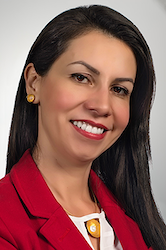 Sandra: We provide support through corporate engagement and also community engagement. We identify, for our clients, the potential relationship that they will have with the university in research. Some entities would like to start designing new processes or to develop intellectual property with the university. So, we support that connection.
Sandra: We provide support through corporate engagement and also community engagement. We identify, for our clients, the potential relationship that they will have with the university in research. Some entities would like to start designing new processes or to develop intellectual property with the university. So, we support that connection.
At the same time, we support community engagement. We support the local economic developers and regional economic developers in business attraction and retention. Business attraction is where we support helping foreign companies to land in our entrepreneurial ecosystem. And also, we are helping them to retain those entities and individuals who want to create businesses in our region by putting together the whole pipeline to serve those who are looking to grow their business here.
We also extend our mission to those who are not traditionally served by the university—underserved communities.
Stephanie: What do you think is the most important factor that has really contributed to the success of your work building an innovation pipeline?
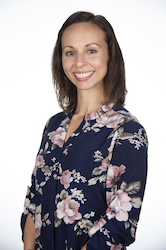 Regina: Some thoughts on my end would be the excitement surrounding the offerings. Students’ excitement and passion and their wanting to get involved really helps with our overall success. Because if you don’t have people who are excited about creating their entrepreneurial journey and fostering that growth, where do you go from there?
Regina: Some thoughts on my end would be the excitement surrounding the offerings. Students’ excitement and passion and their wanting to get involved really helps with our overall success. Because if you don’t have people who are excited about creating their entrepreneurial journey and fostering that growth, where do you go from there?
Also, folks that can be champions of the program. If you can get a few people at different levels and in different areas that see the value and the impact that you’re having, they can help champion this, so that has been very helpful.
Jessica: The most important one that really jumps out for me is the mentoring and support from consultants, the SBDC mentoring. You can educate, you can provide resources and support to small businesses, entrepreneurs, students, et cetera, but that extra push—that extra hand-holding—can really make the difference for an early stage, small business startup entrepreneur, still figuring it out, helping them to continue pushing through versus giving up because they feel alone and they’re struggling. It’s the consultants from the SBDC and other individuals who are willing to give their time and energy to help these entrepreneurs and small businesses as they scale their business with no skin in the game.
Stephanie: If someone is looking to adopt a similar strategy to the model that you’ve created, what would be those first steps to take?
Sandra: Every ecosystem is tailored to their community and environment. You really need to know who the clients are to be sure that you’re serving their needs because yes, one model can serve you as a guide, but when it comes time to implement, you really need to listen and to investigate—who are the players, what are their needs, what makes them successful?
Jessica: The biggest step is the collaboration, just getting the university on board and getting those key players to buy into the overall mission and goal. It takes time. We’ve been able to create this pipeline through open communication and understanding. We’re not competing. We’re all here to service students, faculty, staff, and community. And if we win, everybody wins.
Stephanie: How have you been engaged as a UEDA member and how has that membership helped drive success?
Sandra: When we get a chance, we participate in the networking meetings on talent, innovation, or place. I have found it very helpful to get to know the other folks around our nation and what they’re doing, what they’re working on, what challenges they face. Because in those sessions we’re able to talk in an informal, casual fashion. And you let your guard down a little bit and you say, “Hey, I’m kind of struggling with this. Do you guys have any ideas?” I feel like I have a network of folks who understand my pain points
Jessica: The conference was fantastic. It was our first UEDA conference. I walked in not knowing what to expect, but learned a lot and made some great connections. It was probably one of the only conferences I’ve been to in my professional career where pretty much 99% of it was relevant to what I do, or what the university is doing. I could pull something from every talk. We might have different programs, but we can learn from each other. The educational components, the seminars, and the workshops were just wonderful.
